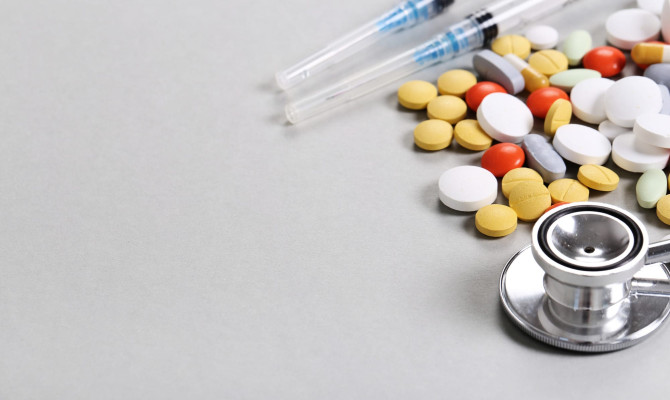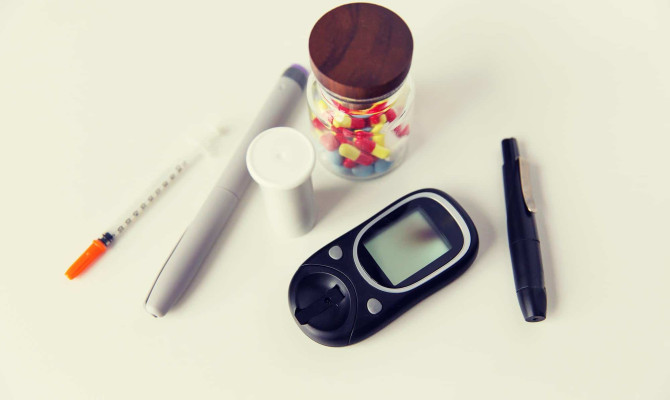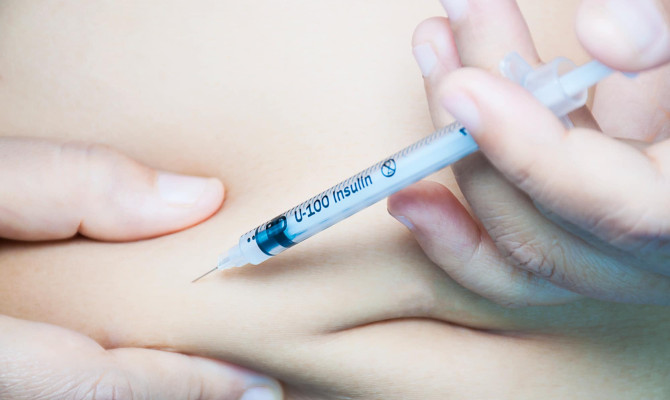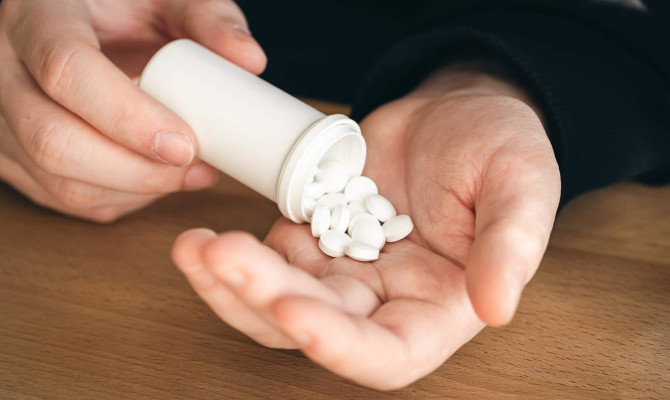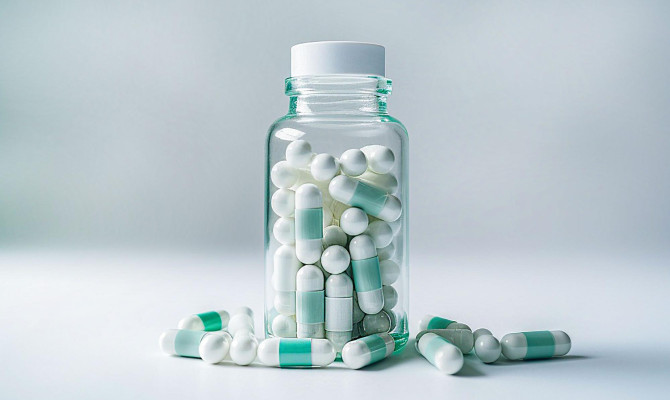Prednisolone: Uses, Side Effects, and Interactions

- Prednisone
- 06 Sep 2023
Introduction
Introduction
Prednisolone is utilized alone or in combination with other drugs to manage the signs and symptoms of insufficient corticosteroid levels. Prednisolone is a corticosteroid medication. It influences how well the immune system works and decreases redness and inflammation. 1Introduction | Researched based study from Medline Plus A few conditions that affect the eyes, kidneys, intestines, skin, lungs, stomach, and the nervous system in general can be treated with Prednisolone. Prednisolone helps certain persons who have had organ transplants and avoid transplant rejection and is used for the treatment of multiple sclerosis, allergic responses, and certain forms of arthritis. Prednisolone is furthermore occasionally used to lessen the signs and symptoms of cancer.

Mode of Action
Mode of Action
- Prednisolone is a synthetic adrenocortical steroid medication having glucocorticoid-dominant characteristics.
- Prednisolone has a number of pharmacological effects that are brought on by its glucocorticoid properties, that includes:
- It promotes gluconeogenesis.
- It increases glycogen storage in the liver.
- It inhibits the use of glucose and insulin activity.
- It increases protein catabolism and lipolysis.
- It stimulates the synthesis and storage of fat.
- It increases glomerular filtration rate.
- Prednisolone can encourage the release of several gastric juice components.
- Endogenous corticosteroids may also be suppressed if corticotropin synthesis is reduced. 5Mode Of Action | Researched based study from National Institutes of Health
Uses
Uses of Prednisolone
Endocrine Conditions:
- Nonsuppurative thyroiditis
- Congenital adrenal hyperplasia
- Primary and secondary adrenocortical insufficiency
- Hypercalcemia of malignancy
Gastrointestinal Diseases:
- Ulcerative colitis
- Crohn’s disease
Pulmonary Conditions:
- Fulminating pulmonary tuberculosis when used simultaneously with appropriate chemotherapy
- Idiopathic bronchiolitis
- Aspiration pneumonitis
- Idiopathic eosinophilic pneumonia
- Hypersensitivity pneumonitis
- Allergic bronchopulmonary aspergillosis
Hematologic Disorders:
- Adult-onset idiopathic thrombocytopenic purpura
- Diamond-Black fan anemia
- Acquired hemolytic anemia
- Pure red cell aplasia
- Secondary thrombocytopenia
Allergic Diseases:
Treatment of severe or incapacitating allergy diseases in both adult and pediatric populations that are resistant to sufficient trials of conventional therapy includes:
- Drug hypersensitivity response
- Atopic dermatitis
- Seasonal or ongoing allergy reactions
Skin Conditions like:
- Pemphigus
- Mycosis fungoides
- Bullous dermatitis herpetiformis
- Contact dermatitis
- Exfoliative erythroderma
- Stevens-Johnson syndrome
Nervous System Disorders:
- Multiple sclerosis flare-ups are sudden and severe, cerebral edema brought on by a primary or malignant brain tumor, a craniotomy, or a concussion.
Ophthalmic Conditions:
Among the ophthalmic ailments are
- Uveitis
- Sympathetic ophthalmia
- Inflammatory disorders of the eye that are unresponsive to topical corticosteroids
Renal Conditions:
- To cause a nephrotic syndrome diuresis without uremia, whether it be of the idiopathic variety or one caused by lupus erythematosus.
Rheumatologic Disorders:
- As a short-term supplementary therapy in gouty arthritis. 3Uses | Researched based study from Food and Drug Administration
Dosage
Dosage
There are numerous forms of corticosteroids, including:
- Skin-care products like creams and ointments.
- Forms that can be inhaled through the nostrils or lungs.
- Liquids or pills that are taken orally.
- Injectable substances are given to veins, joints, muscles, or the skin.
- The majority of corticosteroid overdoses include tablets or liquids.
Prednisolone pills come in the following strengths:
- Prednisolone doses of 200 mg per day for a week, and 80 mg alternate day for a month help in treating acute exacerbations of multiple sclerosis.
- Nephrotic syndrome in children is often treated with a regimen of 60 mg/m2/day given in 3 divided doses over the course of four weeks, followed by four weeks of 40 mg/m2/day alternate-day therapy.
- The starting dose of prednisolone for pediatric children may change based on the disease being treated. Initial doses are often given in three or four divided doses, ranging from 0.14 to 2 mg/kg/day. 3Dosage | Researched based study from Food and Drug Administration
- The dosage requirements may vary and must be individualized based on the disease, treatment and the patient’s response.
Administration
How is Prednisolone taken?
- To lessen gastrointestinal discomfort, prednisone may be taken orally with food or milk, and depending on the patient’s response and the severity of the disease, the dosage of prednisolone should be tailored.
- If recommended dosage is unable to deliver the desired dose, use a suitable prednisolone formulation.
- This could be crucial when treating disorders that call for tapering doses that prednisolone is unable to handle, including lowering the dose below 10 mg.
- The starting dose of prednisolone may range from 10 to 60 mg every day.
- Less severe conditions will typically require lower doses, although certain patients may need greater beginning doses.
- Up until a positive reaction is noticed, the starting dosage should be kept or increased.
- If a sufficient amount of time has passed and there has been no adequate clinical improvement, prednisolone should be stopped and the patient should be started on another form of effective treatment.
- Patients need to be told not to take the tablet out of the blister until right before taking it. The orally disintegrating tablet should then be removed from the blister pack and placed on the tongue, where it can either disintegrate naturally in the mouth with or without the aid of water or be taken whole like any other type of pill.
- The dosage forms for orally disintegrating tablets are fragile and avoid splitting, breaking or cutting the tablet. 5Administration | Researched based study from National Institutes of Health
Storage
Storage & Disposal
- Keep this medication away from children and tightly closed in its original container.
- Store between 20 and 25 ºC, excursions are allowed to 15 and 30 ºC.
- Keep the medication at room temperature, avoid sunlight, moisture, bathroom, and excessive heat.
- To avoid ingesting the unused drugs by children, pets, or other people, unused drugs must be disposed of carefully.
- Do not flush your medication down the toilet.
- Making use of a drug take-back program is a good approach for getting rid of the medication. 1Storage | Researched based study from Medline Plus
Side Effects

Prednisolone Side Effects
Corticosteroids commonly cause
- Fluid retention
- Alterations in glucose tolerance
- Blood pressure elevation
- Psychological and mood changes
- A greater appetite
- Weight gain
Cardiovascular side effects:
- Bradycardia
- Vasculitis
- Cardiac enlargement
- Cardiac arrest
- Hypertension
- Syncope
- Fat embolism
- Congestive heart failure
- Tachycardia
- Edema
- Myocardial rupture
Endocrine effects:
- Menstrual irregularities
- Moon facies
- Secondary adrenocortical and pituitary unresponsiveness
- Hirsutism
- Decreased carbohydrate tolerance
- Diabetes mellitus
- Suppression of growth in children
- Increased requirements of insulin or oral hypoglycemic agents
Dermatologic side effects:
- Ecchymoses and petechiae
- Rashes
- Sterile abscess
- Striae
- Cutaneous and skin atrophy
- Dry scalp
- Swelling
- Facial erythema
- Hyperpigmentation or hypopigmentation
- Compromised wound healing
- Suppressed reactions to skin tests
- Thin, delicate skin
- Thinning scalp hair
- Urticaria 3Side Effects | Researched based study from Food and Drug Administration
Allergic reactions:
- Anaphylaxis
- Angioedema
- Anaphylactoid reaction
Metabolic effects:
- Protein catabolism results in a negative nitrogen balance.
Musculoskeletal side effects:
- Osteoporosis
- Long bone fractures
- Steroid myopathy
- Tendon rupture
- Necrosis of the femoral and humeral heads
- Muscular weakness
- Charcot-like arthropathy
- Decreased muscle mass
- Vertebral compression fractures
Neurological:
- Arachnoiditis
- Convulsions
- Euphoria
- Emotional instability
- Depression
- Headaches
- Insomnia
- Meningitis
- Irritability
- Neuropathy
- Paraplegia
- Paresthesia (sensory abnormalities)
- Vertigo
Ophthalmology:
- Posterior subcapsular cataracts
- Glaucoma
- Exophthalmos
- Elevated intraocular pressure
Reproductive side effects:
- Changes in spermatozoa count and motility.
Electrolyte and Fluid disturbances:
- Hypertension
- Sodium retention
- Hypokalemic alkalosis
- Retention of fluids
- Potassium loss
Gastrointestinal side effects:
- Hepatomegaly
- Hiccups
- Fatigue
- Nausea
- Pancreatitis
- Abdominal distention
- Elevated serum liver enzyme levels
- Ulcerative esophagitis
- Peptic ulcer with potential for perforation, and hemorrhage.
General side effects:
- Increasing hunger and gaining weight 2Side effects | Researched based study from Cleveland Clinic
Precautions
Warnings and Precautions
Use in Pregnancy:
- The fetus can suffer injury if prednisolone is taken by a pregnant woman.
- Corticosteroid use during the first trimester of gestation may increase the risk of intrauterine growth restriction, low birth weight, and orofacial clefts.
- The patient should be informed about the side effects of the drug to the fetus in case of pregnancy or while planning pregnancy.
Lactation:
- In human milk, prednisolone is secreted. Care should be used while giving prednisolone to a breastfeeding mother.
- Long-term use of high doses of corticosteroids could cause problems with endogenous corticosteroid synthesis and affect newborn growth and development.
- Prednisolone should only be provided to breastfeeding mothers at the lowest dose necessary to produce the desired clinical outcome.
Impact on Development and Growth:
- Children’s growth and development may be negatively impacted by prolonged corticosteroid use.
- Pediatric patients receiving protracted corticosteroid medication should have their growth and development closely watched.
- In addition to routine blood pressure, height, weight, and intraocular pressure checks, juvenile patients should also undergo clinical evaluations for any signs of infections, psychological problems, blood clots, peptic ulcers, cataracts, and osteoporosis.
Geriatric Use:
- Geriatric people may experience more corticosteroid-related adverse effects, which seem to be dose-related.
- The most common side effect, osteoporosis, has a greater occurrence rate in elderly patients receiving corticosteroids than in younger populations and age-matched controls.
- When choosing a dose for an aged patient, care should be taken to start at a lower dose of the dosing range. 3Precautions | Researched based study from Food and Drug Administration
Increased Infection Risk:
- The chances of infection with any pathogen, especially viral, fungal, bacterial, protozoan, or helminthic diseases, may be increased by corticosteroids.
- The incidence of infectious problems rises with increasing corticosteroid dosages.
Alteration in Cardiovascular and Renal Function:
- Corticosteroids can raise blood pressure, promote water and salt retention, and increase potassium and calcium excretion.
- With the exception of when administered in large quantities, these effects are less likely to happen with the synthetic versions.
- Potassium supplements and dietary salt limitations may be required.
- Patients with high blood pressure, hematologic disease, heart disease, or kidney failure should use these medications with caution.
Mood and Behavioral disturbances:
- The use of corticosteroids has been linked to a variety of central nervous system side effects, including euphoria, sleeplessness, mood swings, personality changes, severe depression, and overt psychotic symptoms.
- Additionally, corticosteroids may make pre-existing emotional instability or psychotic tendencies worse.
Effects on the Eye:
- Long-term use of corticosteroids increases the development of secondary fungal or viral ocular infections, glaucoma, posterior subcapsular cataracts, and optic nerve damage.
Utilization in Patients with Digestive Disorders:
- Patients with specific GI illnesses have a higher risk of gastrointestinal (GI) perforation.
- In individuals taking corticosteroids, symptoms of GI perforation, such as peritoneal discomfort, may be concealed.
Vaccination:
- When a patient is undergoing immunosuppressive doses of corticosteroids, the administration of vaccinations (attenuated or live) should be avoided.
- Vaccines that have been killed or inactivated can be given, but the outcome is unpredictable.
- Patients who are getting corticosteroids as a replacement medication, such as for Addison’s disease, may undergo vaccination protocols. 3Precautions | Researched based study from Food and Drug Administration
Overdose
Overdose
- Most persons who take too much corticosteroid experience only minor modifications in their body’s electrolytes and fluids.
- If they experience changes in heart rhythm, things could get worse.
- Even when corticosteroids are taken correctly, several issues associated with taking them may still arise.
- To treat these issues, some people with these disorders might have to use short- and long-term medications.
- Acute overdose is treated with stomach lavage or emesis immediately, then with supportive and symptomatic care.
- Prednisolone dosage may be temporarily lowered for chronic overdose in the presence of severe disease necessitating ongoing steroid therapy or alternating daily regimens may be instituted. 4Overdose | Researched based study from Medline Plus
Interactions
Drug Interactions
Aminoglutethimide:
- Aminoglutethimide may cause the adrenal suppression caused by corticosteroids to disappear.
Amphotericin B:
- Cases of congestive heart failure and cardiac hypertrophy following concurrent use of Amphotericin B and hydrocortisone have been documented.
Anticholinesterase Agents:
- Patients with myasthenia gravis who use corticosteroids and anticholinesterase medications concurrently may experience severe weakness.
- If at all possible, anticholinesterase medications have to be stopped at least 24 hours before corticosteroid therapy starts.
CYP3A4 inducers:
- CYP3A4 inducers increase the activity of the hepatic microsomal drug metabolizing enzyme, which may speed up the metabolism of prednisolone, and necessitate increasing the dosage of prednisolone.
CYP3A4 inhibitors:
- Ketoconazole has been shown to reduce the metabolism of some corticosteroids by as much as 60 %, increasing the likelihood of adverse effects from corticosteroids. 3Interactions | Researched based study from Food and Drug Administration
Cholestyramine:
- This substance has the potential to speed up the clearance of corticosteroids.
Cyclosporine:
- When administered together, cyclosporine and corticosteroids may have increased activity.
- It has been noted that this concurrent use can cause convulsions.
Digitalis:
- Patients using digitalis glycosides may be more susceptible to arrhythmias as a result of hypokalemia.
Anticoagulant Drugs:
- To maintain the intended anticoagulant effect, coagulation indices should be routinely checked.
Antidiabetic Drugs:
- Corticosteroids may produce an increase in blood glucose levels, necessitating a change in the dosage of antidiabetic drugs.
Antitubercular Medications:
- Isoniazid serum concentrations may drop.
NSAIDs, such as Aspirin and Salicylates:
- The risk of gastrointestinal adverse effects is increased when corticosteroids and other NSAIDS are taken together.
- In hypoprothrombinemia, aspirin should be taken with caution in addition to corticosteroids.
Potassium-depleting Medications:
- Patients receiving corticosteroids concurrently with potassium-depleting medications should be continuously monitored for the onset of hypokalemia.
Skin Tests:
- Corticosteroids may reduce skin test reaction rates.
Toxoids and Live or Inactivated Vaccines:
- Corticosteroids may make certain types of the organisms found in live, and attenuated vaccinations more reproducible. 3Interactions | Researched based study from Food and Drug Administration
Any feedback on this article?
 This Articles content was accurate
This Articles content was accurate Very Informative Article
Very Informative Article I have a question or a comment
I have a question or a comment
 This article contains inaccurate content
This article contains inaccurate content This article was not helpful
This article was not helpful I have a question or a comment
I have a question or a comment
We appreciate your helpful feedback!
Checkout our social pages
References
-
Medline Plus
Introduction | Storage
-
Cleveland Clinic
Side Effects
-
Food and Drug Administration
Uses | Dosage | Administration | Side Effects | Precautions | Interactions
-
Medline Plus
Overdose
-
National Institutes of Health
Mode of action | Administration













